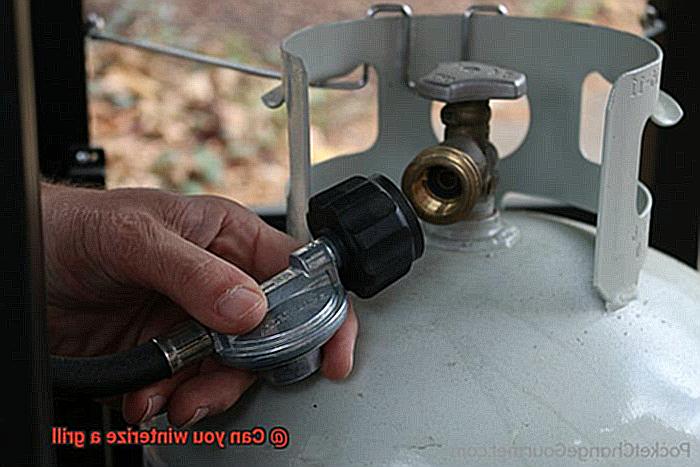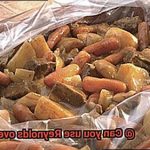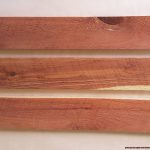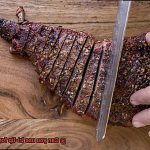Winter is here, and it’s time to say goodbye to sunny days and outdoor grilling. But what should you do with your grill during the cold months ahead? Leave it outside, covered, or store it away? And can you even winterize a grill? No one wants to find a rusted, broken grill come springtime.
But don’t worry. Contrary to popular belief, you can winterize your grill to ensure that it’s ready for use in the spring. Winterizing a grill involves cleaning it, protecting it from the elements, and storing it properly.
In this blog post, we’ll dive into what winterizing a grill means, why it’s important, and some tips for doing it effectively. From covering your grill to draining the gas lines to storing it in a safe place, we’ve got you covered. Whether you’re an experienced grilling pro or just starting out, keep reading to learn how to winterize your grill and keep those summer barbecues sizzling hot all year round.
Contents
What is Winterizing a Grill?
Grilling season may be over, but that doesn’t mean you should neglect your grill. Winter is coming, and with it comes harsh weather conditions that can cause damage to your grill. Luckily, winterizing your grill is an easy process that will help keep it functional and efficient for years to come. Here’s what you need to know.
Cleaning Your Grill Thoroughly
Before storing your grill for the winter, make sure to clean it thoroughly. Scrub away any leftover food particles, grease, and other debris that may have accumulated on the grates or inside the grill. A grill brush, hot soapy water, and a scraper will make cleaning easier. Don’t forget to dry the grill completely to prevent moisture from accumulating and causing damage.
Inspecting Your Grill for Damage
After cleaning your grill, inspect it for any damage or wear and tear. Look for signs of rust, cracks, or other issues that may need to be addressed before storing your grill for the winter. If you notice any damage, make sure to address it before storing your grill.
Protecting Your Grill with a Cover
Using a high-quality cover is crucial in protecting your grill from snow, rain, and other harsh weather conditions. It’s best to choose a cover that fits your grill correctly and is made of durable materials that can withstand the elements.
Storing Your Grill in a Dry Place
Storing your grill in a dry, sheltered location such as a garage or shed is ideal. However, if you do not have any indoor storage space, you can still winterize your grill by placing it in a protected area where it will not be exposed to harsh weather conditions.
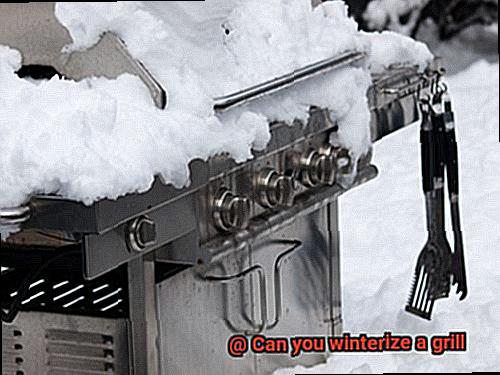
Performing Regular Maintenance
To prevent any issues from arising, regular maintenance on your grill throughout the year is essential. Check for any signs of damage or wear and tear and replace any worn-out parts promptly.
Why is it Important to Winterize a Grill?
Grilling is an activity that brings joy and satisfaction to many people, especially during the warm summer months. However, it’s important to remember that our grill needs care and attention to keep it in good condition. One of the most crucial steps in maintaining your grill is winterizing it before storing it away for the cold months.
Winterizing your grill might seem like a daunting task, but it’s worth the effort. Here are some reasons why you should winterize your grill:
Protects your grill from moisture
Moisture from rain or snow can seep into the crevices of your grill, leading to rusting and corrosion of its metal parts. This rusting can weaken the grill’s structure, making it unsafe to use. To prevent this, cover your grill with a waterproof cover or store it in a dry place to keep moisture buildup at bay.
Keeps critters out
During the winter months, small animals like mice and rats search for warm places to nest, and an unattended grill may look like an ideal spot for them. These critters can chew through wires and damage different parts of the grill, leading to significant problems when you try to use it again. To avoid this, clean your grill thoroughly and cover it with a tight-fitting cover to keep these critters out.
Prepares your grill for immediate use
Leaving your grill unprotected during winter can lead to dirt and debris accumulation inside it over time. This buildup can affect its performance, leading to uneven heat distribution and other issues that make grilling challenging. To avoid this, winterize your grill by cleaning it thoroughly, removing any leftover food particles, and covering it with a waterproof cover. This way, you’ll have a clean and ready-to-use grill when grilling season returns.
Step-by-Step Guide to Winterizing a Grill
As the temperature drops and winter sets in, it’s important to properly prepare your grill for the cold weather ahead. Neglecting to winterize your grill can result in damage and decreased performance, which is the last thing you want for your beloved appliance. With this step-by-step guide to winterizing a grill, you’ll be able to keep your grill in great condition throughout the colder months.
Step 1: Thoroughly Clean Your Grill
Before you start the winterization process, it’s essential to give your grill a thorough cleaning. Begin by removing all of the grates and scrubbing them down with a wire brush. Next, use a grill brush or scraper to clean out the inside of the grill, ensuring that you remove any ash or debris that may have accumulated.
Step 2: Protect Your Grill from the Elements
To protect your grill from snow, ice, and other harsh winter elements, invest in a waterproof cover that fits your grill snugly. This will help prevent rusting and critter infestations, which can cause significant damage.
Step 3: Use a Sealant or Protective Spray
To prevent rust and corrosion caused by winter weather, use a sealant or protective spray on your grill. There are many types of sealants and sprays available on the market, so do your research to find one that is compatible with your specific grill.
Step 4: Store Your Grill in a Dry Place
If you plan on storing your grill for the winter, make sure to do so in a dry and protected area. A garage or shed is ideal, but if you don’t have access to one of these spaces, consider storing your grill inside your home if you have enough space. Before storing it away, ensure that it’s completely dry to prevent any mold or mildew from forming.
Cleaning the Grill
As temperatures cool down and winter approaches, it’s time to start thinking about winterizing your grill. But before you tuck it away for the season, there’s one crucial step you can’t skip: cleaning it thoroughly.
Why is cleaning so important? For starters, leaving food residue or grease on the grill can cause corrosion and serious damage. So let’s break down how to tackle this essential task.
- Step one: grates. Grab a brush or scraper and remove any leftover food particles and debris. Then, use warm soapy water to give those grates a deep clean. For stubborn stains or built-up gunk, consider a specialized grill cleaner.
- Step two: inside of the grill. Don’t forget about the bottom of the grill – remove any ash or debris and give those burners a good scrub with a wire brush. And if your grill has a drip pan or grease tray, be sure to remove it and clean it thoroughly as well.
Once your cleaning is complete, rinse the entire grill thoroughly with water and dry it completely with a clean towel. You may even want to leave it outside in the sun for a few hours to ensure it’s completely dry before storing it away for the winter.
But why stop there? Here are some additional tips for keeping your grill in top shape:
- Cover it up: Invest in a high-quality cover to protect your grill from the elements during winter storage.
- Check for leaks: Before firing up your grill in the spring, be sure to check for gas leaks or other issues that may have arisen during storage.
- Regular maintenance: Throughout the grilling season, be sure to keep up with regular maintenance tasks like emptying ash and cleaning grates.
Covering the Grill
One of the most critical steps in winterizing your grill is covering it with a suitable cover. But why is this step so important? Allow me to explain.
Covering your grill is crucial because it protects it from the harsh winter weather. Snow, sleet, and freezing temperatures can cause damage and corrosion, which can significantly reduce your grill’s lifespan. By covering it up, you shield it from these elements and ensure it stays in good condition.
When choosing a cover, opt for one that fits your grill correctly and is made from durable materials like vinyl, canvas or polyester. Before covering the grill, ensure you clean it thoroughly to remove any leftover grease or food particles. This will prevent mold and mildew from developing while it’s covered.
Once your grill is clean, securely fasten the cover to prevent pests or debris from getting inside. Check for any gaps or tears in the cover where water or snow can seep in and cause damage.
It’s important to note that covering your grill alone may not be enough to fully winterize it. Consider removing any propane tanks or disconnecting gas lines and storing them safely. You may also want to apply a protective coating to any exposed metal parts to prevent rust and corrosion.
In summary, here are some key points to keep in mind when covering your grill:
- Choose a cover that fits your grill correctly and is made from durable materials.
- Thoroughly clean your grill before covering it.
- Securely fasten the cover to prevent pests or debris from getting inside.
- Check for any gaps or tears in the cover where water or snow can seep in.
- Remove propane tanks or disconnect gas lines and store them safely.
- Apply a protective coating to any exposed metal parts.
Storing the Grill in a Dry Place
As the temperatures drop and winter approaches, it’s time to start thinking about how to protect your grill from the harsh elements. Storing your grill in a dry place is essential for ensuring that it remains in excellent condition over the winter season and beyond.
The first step in winterizing your grill is to give it a thorough cleaning. It’s important to remove any leftover food particles, grease, and debris to prevent mold or bacteria buildup. This step will ensure that your grill is ready to use when the warmer weather returns.
Choosing the right storage location for your grill is critical. A dry, well-ventilated area like a garage, shed, or covered patio will protect your grill from moisture buildup that can cause rust or corrosion. If you don’t have a covered space, investing in a grill cover is a must. A high-quality cover will shield your grill from dust, debris, and moisture and keep it looking brand new.
When storing your grill, make sure to disconnect the propane tank or remove any charcoal briquettes for safety reasons. This step will prevent any potential hazards from occurring while your grill is in storage.
If you’re looking for even more ways to protect your grill during the winter months, consider investing in additional accessories like drip pans or heat-resistant gloves. These items can help keep your grill clean and in good condition.
Regular Maintenance of the Grill
Not only does proper upkeep ensure that your grill is safe to use, but it also enhances its overall performance, allowing you to cook up mouth-watering meals for years to come. So what are the steps you should take to ensure your grill is always ready for action?
First and foremost, cleaning the grill grates is a vital step in maintaining your grill. Use a wire brush or a grill stone to scrub away any food particles or debris that may have accumulated on the grates. Then, oil the grates with a high smoke point oil like vegetable oil. This prevents food from sticking while cooking and helps extend the life of your grill.
Next, don’t forget about the burners. They should be cleaned regularly with a wire brush, and any clogs in the burner holes should be cleared out. Clogged burners can lead to uneven heating, which can negatively impact the overall performance of your grill.
It’s also important to check other components such as heat deflectors, drip pans, and ignition systems. Heat deflectors can be cleaned using a scraper or wire brush, while drip pans should be emptied and washed with soap and water. If your grill has an ignition system, remove the batteries and store them separately.
Finally, when winter arrives, make sure that you store your grill properly by covering it with a weather-resistant cover that fits snugly over it. Disconnect the propane tank and store it separately in a cool, dry place. If you’re not planning on using your grill for an extended period of time, it’s recommended that you remove the batteries from the ignition system and store them separately as well.
kfygCaNw3pw” >
Conclusion
In conclusion, winterizing your grill is a crucial step in maintaining its longevity and functionality. With a little effort and care, you can ensure that your grill remains in excellent condition throughout the colder months and beyond.
Thoroughly cleaning your grill, inspecting it for damage, and protecting it with a cover are all essential steps to winterizing your grill. By storing it in a dry place and performing regular maintenance throughout the year, you can keep your appliance functioning efficiently for years to come.
Although winterizing your grill may seem daunting, neglecting it can lead to moisture buildup, critters invading its interior, and dirt accumulation. All of these factors can negatively impact its performance when grilling season returns. Proper upkeep ensures that your grill is safe to use and enhances its overall performance.
By following our step-by-step guide and incorporating additional tips such as covering the grill correctly and storing it in a dry place, you can keep your beloved appliance in top shape.

